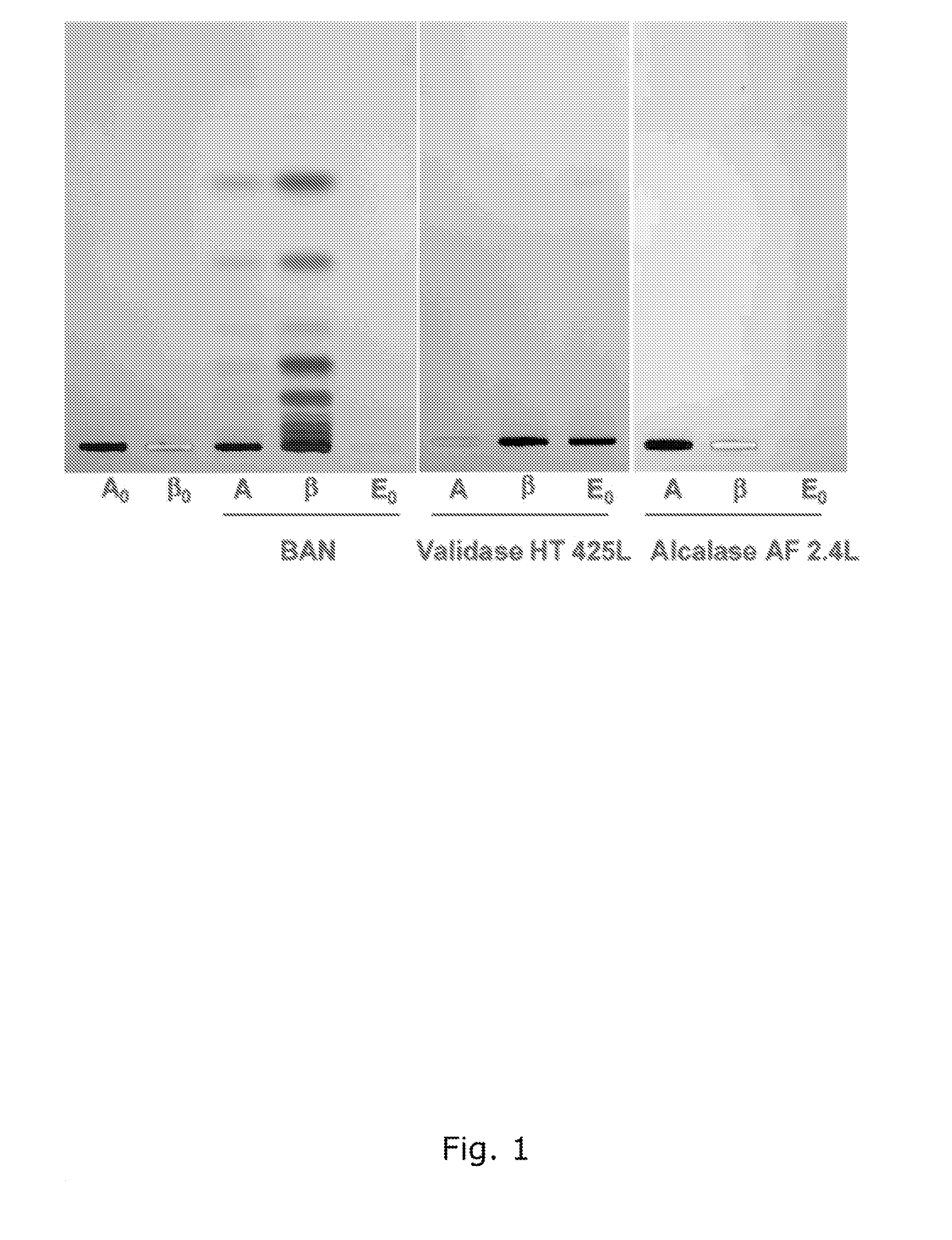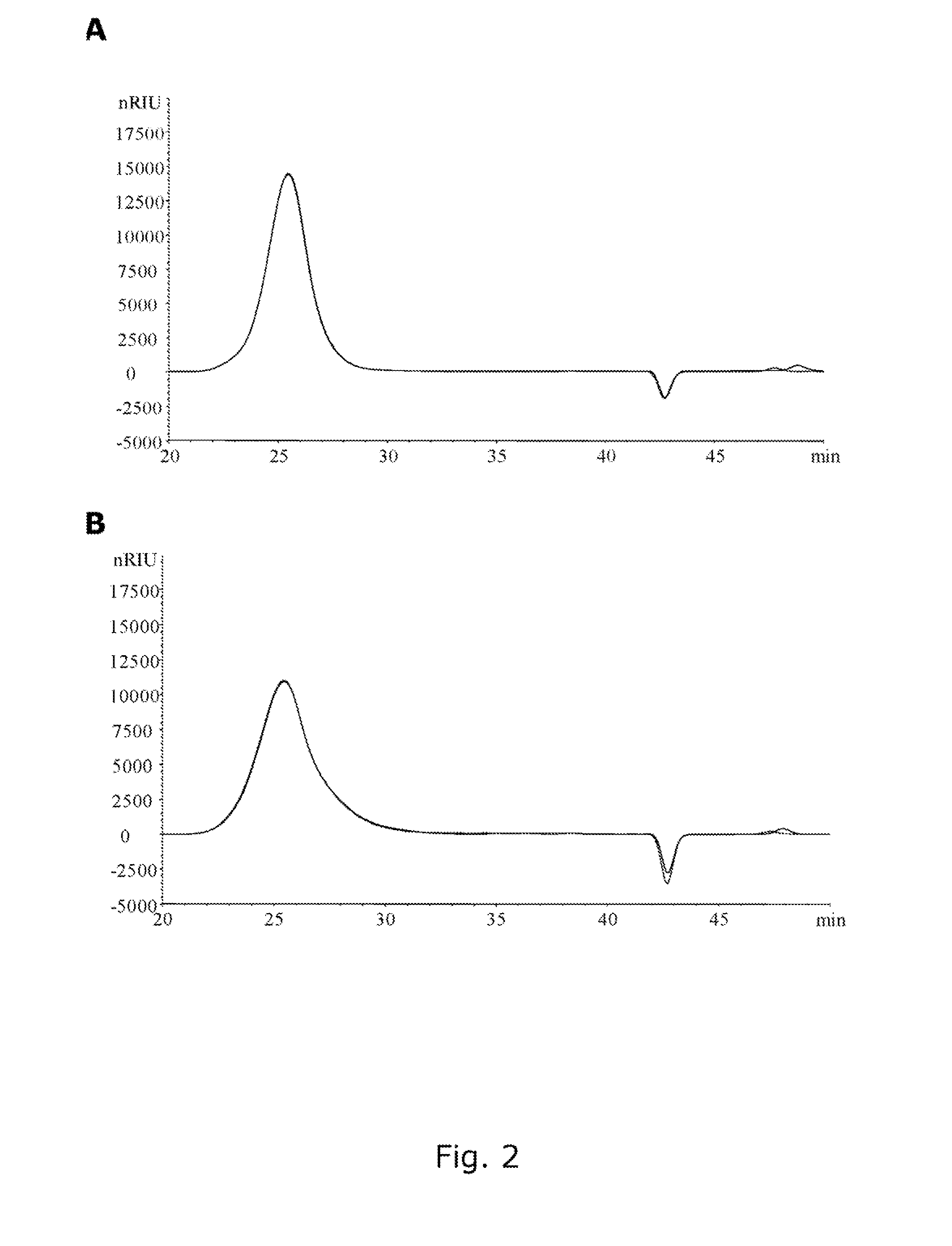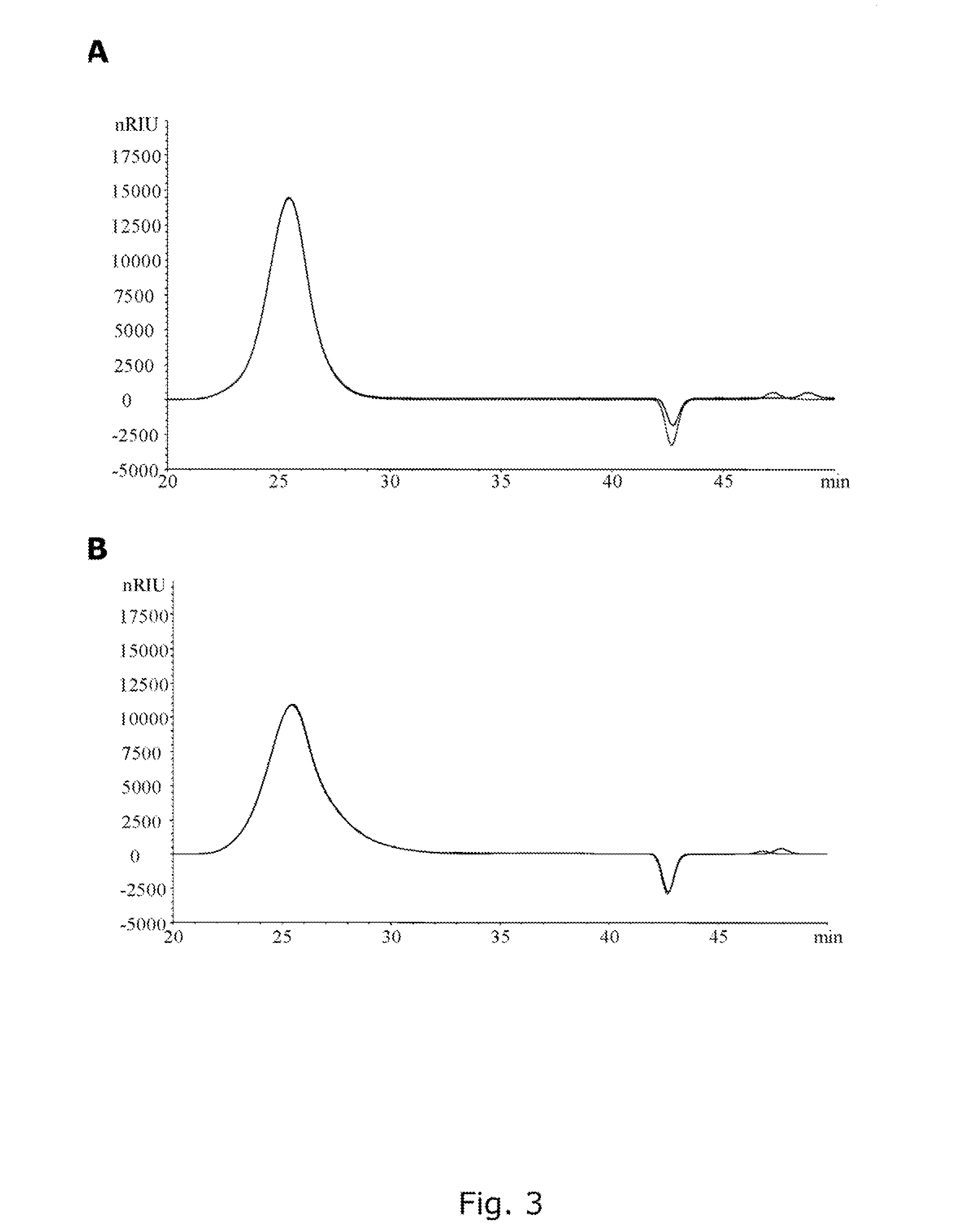Food ingredient comprising hydrolyzed whole grain
- Summary
- Abstract
- Description
- Claims
- Application Information
AI Technical Summary
Benefits of technology
Problems solved by technology
Method used
Image
Examples
example 1
Preparation of a Hydrolyzed Whole Grain Composition
[0134]Enzyme compositions comprising Validase HT 425L (alpha-amylase) optionally in combination with Alcalase 2.4 L (protease) were used for the hydrolysis of wheat, barley and oats.
[0135]Mixing may be performed in a double jacket cooker, though other industrial equipment may be used. A scraping mixer works continuously and scraps the inner surface of the mixer. It avoids product burning and helps maintain a homogeneous temperature. Thus enzyme activity is better controlled. Steam may be injected in the double jacket to increase the temperature while cold water may be used to decrease the temperature.
[0136]In an embodiment, the enzyme composition and water are mixed together at a temperature, between 10 and 25° C. At this low temperature, the enzymes of the enzyme composition have a very weak activity. The whole grain component is then added and the ingredients are mixed for a short period of time, usually less than 20 minutes, unti...
example 2
Sugar Profile of the Hydrolyzed Whole Grain Composition
[0140]Hydrolyzed whole grain compositions comprising wheat, barley and oats were prepared according to the method in example 1.
[0141]Carbohydrates HPAE:
[0142]The hydrolyzed whole grain compositions were analysed by HPAE for illustrating the sugar profile of hydrolysed whole grain compositions.
[0143]Carbohydrates are extracted with water, and separated by ion chromatography on an anion exchange column. The eluted compounds are detected electrochemically by means of a pulsed amperometric detector and quantified by comparison with the peak areas of external standards.
[0144]Total Dietary Fibres:
[0145]Duplicate samples (defatted if necessary) are digested for 16 hours in a manner that simulates the human digestive system with 3 enzymes (pancreatic alpha-amylase, protease, and amyloglucosidase) to remove starch and protein. Ethanol is added to precipitate high molecular weight soluble dietary fibre. The resulting mixture is filtered a...
example 3
Hydrolytic Activity on Dietary Fibers
[0154]The enzymes Validase HT 425L (Valley Research), Alcalase 2.4L (Novozymes) and BAN (Novozymes) were analysed using a thin layer chromatography analysis for activity towards arabinoxylan and beta-glucan fibre extracts both components of dietary fibers of whole grain.
[0155]The results from the thin layer chromatography analysis showed that the amylase Validase HT and the protease Alcalase showed no hydrolytic activity on either beta-glucan or arabinoxylan, while the commercial alpha-amylase preparation, BAN, causes hydrolysis of both the beta-glucan and arabinoxylan, see FIG. 1.
[0156]See also example 4.
PUM
 Login to View More
Login to View More Abstract
Description
Claims
Application Information
 Login to View More
Login to View More - R&D
- Intellectual Property
- Life Sciences
- Materials
- Tech Scout
- Unparalleled Data Quality
- Higher Quality Content
- 60% Fewer Hallucinations
Browse by: Latest US Patents, China's latest patents, Technical Efficacy Thesaurus, Application Domain, Technology Topic, Popular Technical Reports.
© 2025 PatSnap. All rights reserved.Legal|Privacy policy|Modern Slavery Act Transparency Statement|Sitemap|About US| Contact US: help@patsnap.com



